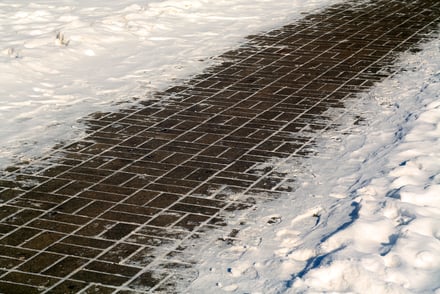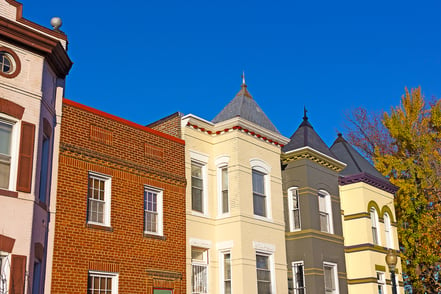Renaissance Development, a leader in brick restoration and historic preservation, specializes in the restoration of a historic brick building’s mortar joints using traditional methods (tuckpointing) and materials. Contact us for a free site visit and project quote.
Many historic homes in the Washington DC area display stately brick facades. One of the advantages of this type of construction is that brick masonry is relatively maintenance free. While the brick units can last 100 years or more, the mortar joints typically last for twenty to thirty years depending on the type of weather exposure. After that, as home owners discover, repairs to the mortar joints are needed.
Owners of historic brick homes quickly become familiar with the term "tuckpointing." Sometimes called “repointing” – it describes the restoration of historic brick buildings by removing mortar between masonry joints and replacing it with lime-based mortar.
What is Traditional Tuckpointing
With traditional tuckpointing, historic brick buildings are restored by removing mortar between masonry joints and replacing it with lime-based mortar. When done correctly, tuck pointing will ensure the structural integrity, longevity, and value of buildings constructed of brick during the 18th, 19th, and early part of the 20th centuries.
Why Use Traditional Methods and Materials
Structures in Washington DC and Old Town Alexandria, VA, built from the 1700’s until the 1920’s, have load-bearing masonry walls consisting only of bricks and mortar. They contain no iron, steel, or any other reinforcing structural support inside their walls. These load-bearing buildings were built of coal-fired clay bricks assembled with lime mortar. The composition, texture, and strength – or level of hardness – of lime mortar are entirely different from cement or concrete, which are modern building materials suited for new construction.
If a historic pre-World War II building is tuckpointed with cement, that modern material’s extreme density – or its level of hardness – will cause the softer coal-fired bricks to crack. If a historic building is not repointed properly, it will eventually show signs of structural damage and interior water penetration.
When mortar is in a weakened condition, it causes moisture to break down the stone or brick masonry wall and possibly cause moisture damage behind it. When tuck pointing is done properly, it provides a relatively watertight mortar joint that extends the life of the wall.
When Should Tuckpointing Be Done?
If you suspect that your mortar is deteriorating there is a simple test you can do to determine if it needs repair. Take a key or other sharp object and rub it across the mortar joint. If it loosens powdered material, your home is probably a candidate for tuck pointing brick. If the masonry is still good, a key should not be able to scratch it at all. If you're not sure or want a more professional assessment, contact a masonry contractor who specializes in historic brick restoration.
Tags:
RepairFeb 7, 2017 4:23:59 PM



